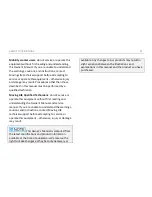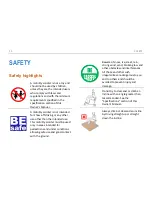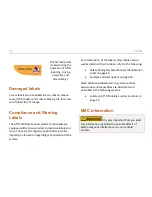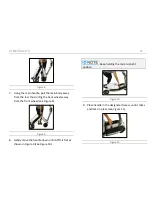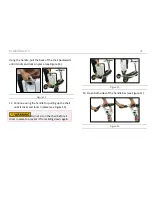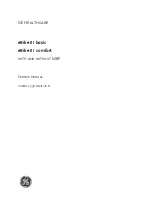
SAFETY
25
Electromagnetic Interference (EMI) from
radio wave sources
Mobility scooters may be susceptible to
electromagnetic interference (EMI), which is
interfering electromagnetic energy (EM) emitted from
sources such as radio stations, TV stations, amateur
radio (HAM) transmitters, two way radios, and cellular
phones. The interference (from radio wave sources)
can cause the mobility scooter to release its brakes,
move by itself, or move in unintended directions. It
can also permanently damage the mobility scooter
control system. The intensity of the interfering EM
energy can be measured in volts per meter (V/m).
Each mobility scooter can resist EMI up to certain
intensity. This is called the "EMI immunity level". The
higher the EMI immunity level, the greater the
protection from EMI. Currently the ATTO technology
has an immunity level of at least 20 V/m, which
provides useful protection from the more common
sources of EMI.
There are a number of sources of relatively intense
electromagnetic fields in the daily environment. Some
of these sources are obvious and easy to avoid.
Others are not apparent and exposure is unavoidable.
However, we believe that by following the warning
listed below, your risk to EMI will be minimized.
The sources of radiated EMI can be broadly classified
into three types:
1)
Hand-held portable transceivers. These are
transmitters-receivers with the antenna mounted
directly on the transmitting unit. These devices
include citizens band (CB) radios, walkie-talkies,
security, fire and police transceivers, cellular
telephones, and other personal communication
devices).
NOTE: Some cellular telephones and similar devices
transmit signals while they are on, even when not
being used.
2)
Medium-range mobile transceivers, such as those
used in police cars, fire trucks, ambulances and
Summary of Contents for MS01068
Page 1: ...OWNER S MANUAL movinglife com ...
Page 2: ...WELCOME 1 WELCOME TO ATTO ...
Page 3: ...2 WELCOME Intentionally left blank ...
Page 5: ...4 WELCOME Intentionally left blank ...
Page 7: ...6 TABLE OF CONTENT Intentionally left blank ...
Page 29: ...28 ATTONOMY ATTONOMY Figure 1 ATTO in close mode ...
Page 30: ...ATTONOMY 29 Figure 2 ATTO in driving mode ...
Page 31: ...30 ATTONOMY Figure 3 More ATTO parts ...
Page 82: ...NOTES 81 NOTES ...
Page 83: ......

